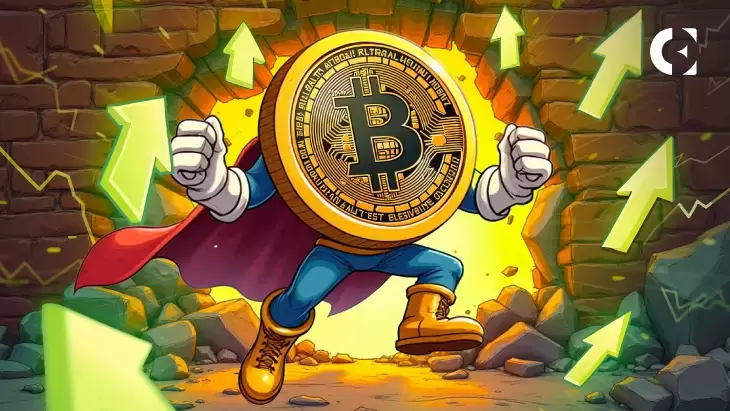 |
|
 |
|
 |
|
 |
|
 |
|
 |
|
 |
|
 |
|
 |
|
 |
|
 |
|
 |
|
 |
|
 |
|
 |
|
伝説のヘッジファンドマネージャーであるレイ・ダリオは、厳しい警告を発しました。世界的な金融命令がリアルタイムで故障しているのを見ています。

Welcome back to the Now Newsletter. I’m Matt Medved.
Now Newsletterへようこそ。私はマットメッドベッドです。
I’m writing to you live from the TIME100 Summit in New York. The speaker lineup is as eclectic as it is star-studded — from Meghan, Duchess of Sussex, and Ryan Reynolds to Demi Moore and Netflix Co-CEO Ted Sarandos. However, the most interesting talk of the day concerned the future of finance.
私はニューヨークのTime100サミットからライブを書いています。スピーカーのラインナップは、サセックス公爵夫人、ライアンレイノルズ、デミムーアとNetflixの共同CEO TED SARANDOSまで、スターが散らばっているのと同じくらい折lect的です。しかし、その日の最も興味深い話は、財政の未来に関係していました。
Legendary hedge fund manager Ray Dalio issued a stark warning: we’re watching the global monetary order break down in real time. Bonds are falling, gold is rising, and faith in traditional currencies is fading fast.
伝説のヘッジファンドマネージャーであるレイ・ダリオは、厳しい警告を発しました。世界的な金融命令がリアルタイムで故障しているのを見ています。債券は減少しており、金は増加しており、伝統的な通貨に対する信仰は速く衰退しています。
Circle CEO Jeremy Allaire called it a once-in-a-generation reset — one where digital dollars could become the new financial foundation by creating ongoing demand for U.S. treasury bonds.
サークルCEOのジェレミー・アレールは、それを1世代のリセットと呼びました。これは、米国財務省の継続的な需要を生み出すことにより、デジタルドルが新しい金融財団になる可能性があります。
And Senator Kirsten Gillibrand? She says Congress still hasn’t woken up, and stablecoin regulation remains the lowest-hanging fruit.
そして、キルステン・ギリブランド上院議員?彼女は、議会はまだ目覚めていないと言い、スタブコインの規制は依然として最も垂れ下がった果物のままです。
It’s worth noting that the panel was preceded by a video explaining Bitcoin, stablecoins, and — believe it or not — NFTs. Welcome to the new world order.
パネルの前に、ビットコイン、スタブコイン、そして信じられないかもしれないことを説明するビデオが先行することは注目に値します。新世界秩序へようこそ。
Which brings us to the latest evolution in onchain experiments: “content coins.” Here are my thoughts on the topic du jour.
これにより、オンチェーン実験の最新の進化に至ります。「コンテンツコイン」です。これがトピックDu Jourについての私の考えです。
🪙 Are Content Coins a Thing?
contentコンテンツコインは何かですか?
The idea of “content coins” is having a moment.Thanks to Base's recent moves on Zora — minting media into tradeable tokens with a single post — a question is rippling through crypto circles: Are we witnessing a meaningful shift in how we value media, or just another flavor of memecoins masquerading as innovation?To begin, let’s clarify some terms.Memecoins thrive on narrative and virality. They’re tokens with no intrinsic utility, pumped by vibes, communities, and often chaos. Their value comes from attention and speculation, not fundamentals.NFTs, on the other hand, represent unique assets. They’re well-suited for media: visual art, music, essays. They’re non-fungible because each carries context and meaning. Content coins try to bridge these worlds. They’re fungible tokens minted from media — tweets, posters, images. You can buy, sell, or trade them like any other ERC-20. But instead of promising future roadmap value (à la traditional projects), each coin reflects a single moment, and its value lives or dies on what the market makes of it.The difference is intention and execution.There’s a compelling thesis behind the movement. As Base's Jesse Pollak argues, the internet has long failed to value content properly. Likes don't pay the rent. Paywalls gate creativity. Algorithms extract value rather than reward it.In this light, content coins offer a radical alternative: an internet where media is free to access, but ownable, tradable — even investable. They propose a market-native way to reward creators and rewire value flows in the attention economy. Speculation becomes a discovery engine. Culture becomes currency.This is the ideal.But crypto doesn’t operate on ideals. It operates on reflexes.When Base minted two content coins within an hour — both via Zora — the first surged to a $13M market cap, only to crater by 90% after the second launched. No context. No communication. Just confusion. What was framed as infrastructure felt indistinguishable from a memecoin drop — and carried the same risks.Crypto markets don't reward nuance. They reward focus. Which is why memecoins work best when there's only one. The entire community rallies behind a single narrative, concentrating liquidity and attention around a unified idea — think $DOGE, $PEPE, $MOG. Launching more than one fractures both the meme and the market.That's what happened to Base's first token. And to $TRUMP when $MELANIA launched. The meme got cannibalized. And people lost money.Pollak's vision rejects that model. He believes every piece of content can, and should, be its own coin. Post, mint, move on. No roadmaps, no Telegram groups, no cult of personality. Just an open protocol for coining culture.In theory, this could normalize onchain creation. But in practice, it collides with crypto's most scarce resources: attention and liquidity.When every post becomes a coin, each one competes not just with other creators, but with your last one. You fragment your narrative. You dilute liquidity. You flatten meaning into momentary price action.Crypto doesn't scale well with infinite inputs. It needs:handles to rally around (e.g., memes, personas) to siphon attention and liquidity into a single point of focus. Otherwise, the experiment quickly becomes noise. Especially when its biggest proponent is visibly struggling to maintain clear communication, coherent messaging, and a consistent tone of voice throughout. As I argued in our recent op-ed, not every piece of
「コンテンツコイン」のアイデアは瞬間を持っています。ゾラに関するベースの最近の動き - 単一の投稿でトレード可能なトークンにメディアを鋳造することに感謝します。質問は暗号のサークルを波及しています。彼らは、雰囲気、コミュニティ、そしてしばしば混chaosで汲み上げられた、本質的なユーティリティのないトークンです。彼らの価値は、基礎ではなく注意と憶測から生じます。彼らは、視覚芸術、音楽、エッセイなど、メディアに適しています。それぞれがコンテキストと意味を運ぶため、それらは不可能です。コンテンツコインはこれらの世界を橋渡ししようとします。それらは、メディアからメディアから造られた頼りやすいトークンです - つぶやき、ポスター、画像。他のERC-20と同様に、それらを購入、販売、または取引することができます。しかし、将来のロードマップ価値(従来のプロジェクトのように)を約束する代わりに、各コインは単一の瞬間を反映しており、その価値は市場が何をしているのかを生かしたり、死にます。違いは意図と実行です。運動の背後にある説得力のある論文があります。 BaseのJesse Pollakが主張するように、インターネットは長い間コンテンツを適切に評価できませんでした。好きな人は家賃を払わないでください。ペイウォールズゲートの創造性。アルゴリズムはそれを報酬するのではなく抽出します。このライトでは、コンテンツコインは急進的な代替品を提供します。メディアが自由にアクセスできるが、所有可能で、取引可能であり、投資可能なインターネット。彼らは、クリエイターに報い、注意経済における価値の流れを再配線する市場とネイティブの方法を提案しています。投機は発見エンジンになります。文化は通貨になります。これは理想です。しかし、暗号は理想に基づいて動作しません。それは反射で動作します。ベースが1時間以内に2つのコンテンツコインをゼロに造ったとき、両方ともゾラ経由で、最初は1300万ドルの時価総額に急上昇しました。コンテキストはありません。コミュニケーションはありません。ただの混乱。インフラストラクチャとしてフレーム化されたものは、メモコインドロップと区別できないと感じ、同じリスクを負いました。彼らは焦点に報いる。それが、1つしかないときにメメコインが最適に機能する理由です。コミュニティ全体は、統一されたアイデアに集中し、$ doge、$ pepe、$ mogに集中している単一の物語の背後に集まります。ミームと市場の両方を複数の骨折を発射します。それが、ベースの最初のトークンに起こったことです。 $メラニアが立ち上げたとき、$トランプに。ミームは共食いしました。人々はお金を失いました。ポラックのビジョンはそのモデルを拒否します。彼は、あらゆるコンテンツがそれ自身のコインであると考えていると信じています。投稿、ミント、先に進みます。ロードマップも電報グループも、性格のカルトもありません。培養文化のためのオープンなプロトコル。理論では、これによりオンチェーンの作成が正常化される可能性があります。しかし、実際には、Cryptoの最も少ないリソースと衝突します:注意と流動性。すべての投稿がコインになると、それぞれが他のクリエイターだけでなく、最後のものと競争します。あなたはあなたの物語を断片化します。あなたは流動性を希釈します。意味を瞬間的な価格アクションに平らにします。CRYPTOは、無限の入力でうまくスケーリングしません。ニーズ:注意と流動性を吸い上げるために(例えば、ミーム、ペルソナなど)ラリーを取り上げます。それ以外の場合、実験はすぐにノイズになります。特に、その最大の支持者が、明確なコミュニケーション、一貫したメッセージング、一貫した音声トーンを維持するのに目に見えて苦労している場合。私が最近のOPEDで議論したように、すべての部分ではありません
免責事項:info@kdj.com
提供される情報は取引に関するアドバイスではありません。 kdj.com は、この記事で提供される情報に基づいて行われた投資に対して一切の責任を負いません。暗号通貨は変動性が高いため、十分な調査を行った上で慎重に投資することを強くお勧めします。
このウェブサイトで使用されているコンテンツが著作権を侵害していると思われる場合は、直ちに当社 (info@kdj.com) までご連絡ください。速やかに削除させていただきます。




























































![aave [aave]は、ロックされた総価値のゆっくりと着実に成長したことを目撃しました(TVL) aave [aave]は、ロックされた総価値のゆっくりと着実に成長したことを目撃しました(TVL)](/uploads/2025/04/24/cryptocurrencies-news/articles/aave-aave-witnessed-slow-steady-growth-total-locked-tvl/middle_800_480.webp)